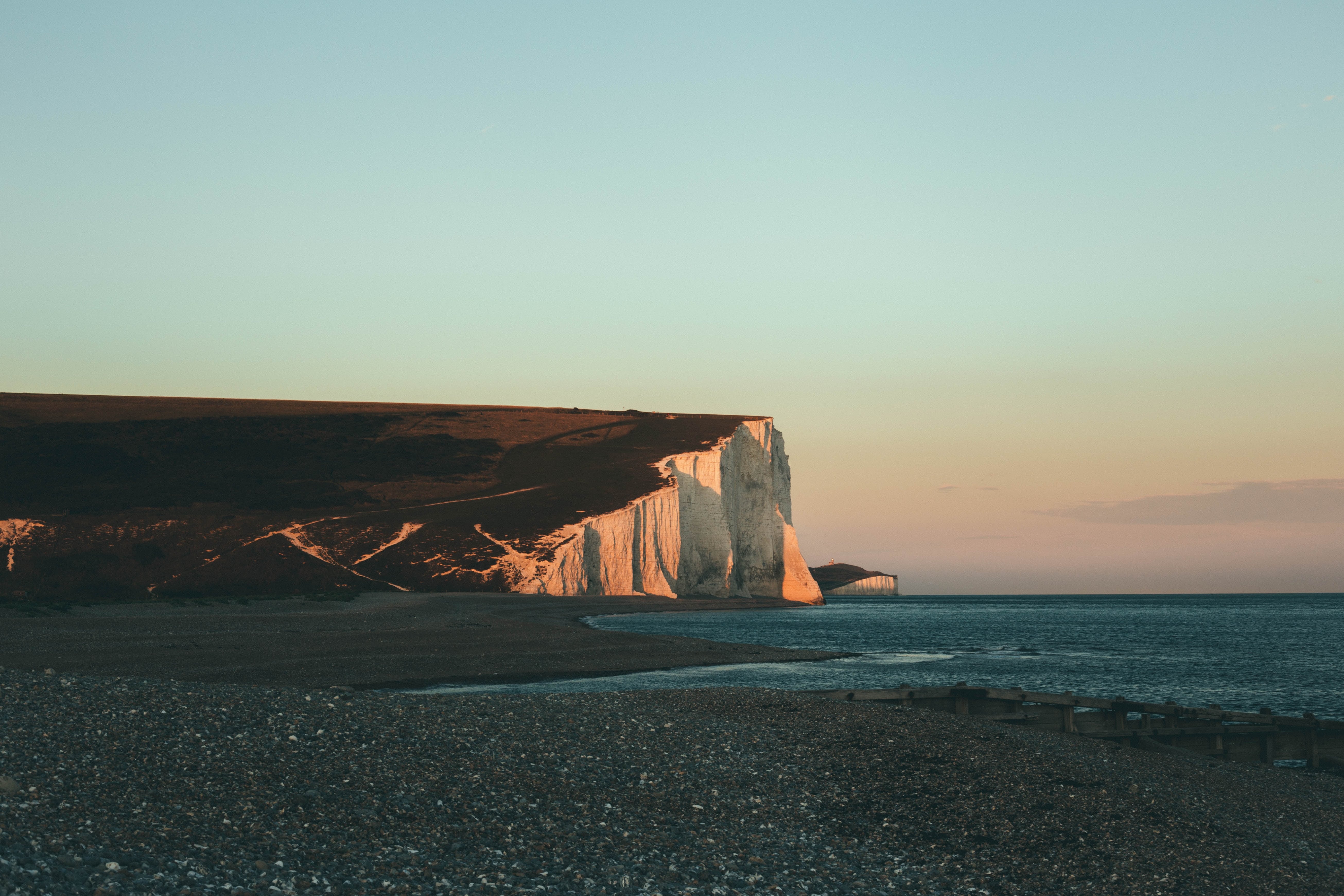Can you scatter ashes anywhere in the UK? Not exactly, but the laws on scattering ashes here are pretty easy-going. You can find the essentials below, as well as the best approaches for a successful scattering.
Here you’ll find info on:
- Laws and regulations on scattering ashes in the UK
- A quick guide to who owns ashes
- Advice on scattering ashes in specific UK locations: cemetery | in the sea, river or a lake | private land | National Trust land | National Parks | mountainside | common land | sports stadiums
- Tips on how to scatter ashes successfully
If you need help and advice, don’t be afraid to give us a call on 0800 044 9454.
What are the laws on scattering ashes in the UK?
When it comes to keeping, burying and scattering ashes, the laws and regulations state that:
- You are free to scatter ashes anywhere in the UK, so long as you have the permission of the landowner.
- That said, there are specific environmental guidelines covering some locations, like the sea or mountainsides. We’ll cover those in detail below.
- If you are burying the ashes in an urn, rather than scattering them, different rules apply. You can read all about the laws on burying ashes here.
Who has the final say on where and how to scatter ashes?
Only the funeral director or the person who signed the application for cremation form can collect the ashes from the crematorium, apart from in special cases.
Just like no one can own a person when they’re alive, no one can own their body or their ashes after they have died. However, the executor of the will (if there is one) has the best claim to custody. This is because it’s their responsibility to make sure that the person who has died is laid to rest, ideally according to their wishes.
If there’s no will, the next of kin (closest living relative) has the best claim. This is usually the spouse or civil partner of the person who has died. If they were unmarried, or widowed, their children have priority. After that, it’s their grandchildren, followed by their parents, then usually siblings, and so on.
If you find yourself in a dispute about where to scatter ashes in the UK, you could consider splitting the ashes between you. That way, each person can say goodbye in their own way.
So, that’s the basics covered. Now let’s look at where to scatter ashes in the UK, and the issues you might need to think about for each location…
Where to scatter ashes in the UK
Ash scattering in a cemetery, churchyard or natural burial ground
This is a very easy option. You (or your funeral director, if you prefer) can just contact the cemetery owner and ask for permission to scatter the ashes. Many have a dedicated memorial garden specifically for this.
You may also be able to scatter the ashes over an existing family grave, if you own the exclusive right of burial for it. But if this has lapsed, you might need to renew or ask permission from a new owner before going ahead.
 Scattering ashes at sea, over a river, or on a lake
Scattering ashes at sea, over a river, or on a lake
Do you need permission to scatter ashes over the water? No – unlike a sea burial, you don’t need a licence or permission from a landowner. However, the Environmental Agency has some guidelines you should follow:
- Anything else you scatter at the same time should be biodegradable. The ashes themselves won’t hurt plants or animals, but a plastic wreath could.
- Stay at least a kilometre upstream of any water collection points, and far from marinas, buildings, and places where people bathe or swim.
- Scatter the ashes on a calm day and hold the urn very close to the water when you empty it. This can help you avoid an ashes-blown-into-faces scenario.
You can find out more about scattering ashes over water or on the beach in our guide here.
Scattering ashes on private land
If you have permission from the landowner, there are no UK laws or regulations that can keep you from scattering ashes on private land. Just be aware that your family might not always have access to that land. If the current owner sells up, the new owner may not be willing to let you visit the scattering site.
Regulations on ash scattering on National Trust land
 The National Trust have given families permission to scatter ashes in the past. However, they ask that you check with those managing the specific National Trust site you’ll be scattering at before going ahead.
The National Trust have given families permission to scatter ashes in the past. However, they ask that you check with those managing the specific National Trust site you’ll be scattering at before going ahead.
Permission is usually granted on the understanding that the ashes will be scattered discreetly, without leaving any grave markers or tributes behind.
Scattering ashes in a UK National Park
Scattering ashes in the UK’s National Parks – the Brecon Beacons, the Lake District, Dartmoor, and others – is often fine, with permission. You’ll need to contact the organisations separately in order to gain it, but usually, a discreet scattering is acceptable. Just make sure to leave the natural environment as you found it.
Scattering ashes on a mountaintop
While the idea of scattering ashes at the top of a mountain has a nice dramatic feel to it, most conservation organisations ask that you avoid this if possible.
This is because human ashes contain minerals that can have an impact on the delicate plant life that grows on mountain summits.
Instead, it’s better to scatter (or even better, bury) the ashes by a corrie or on some other notable spot on the way up the mountain. This will also give you a lot more privacy – no one wants their memorial service to be interrupted by a troupe of slightly sweaty hikers.
 Scattering laws for common land
Scattering laws for common land
Common land, like village greens, does belong to someone. So, while you have the right to roam there, you don’t automatically have the right to scatter ashes there. It’s important to ask for permission before going ahead.
Scattering ashes on sports grounds and in stadiums
Attitudes vary here. Nowadays, some of the more popular stadiums have specific memorial areas on their grounds, to keep the pitch from being affected by the number of ashes scattered there. Others no longer allow scattering at all. A good rule of thumb is that the less popular the location, the better your chances of getting permission.
For in-depth guides on scattering ashes at specific locations in the UK, such as a particular stadium or park, the website Scattering Ashes can be a big help.
Did you know? You can make a will online from home for just £90 with Beyond. It can take as little as 20 minutes to get peace of mind — and you don’t even have to leave your sofa. Find out more here.
How to scatter ashes
How should we scatter ashes? To avoid there are different techniques to choose from:
- Trenching: This is where you dig out a long, narrow hole into which you then sprinkle the ashes before covering them with soil. Often, people dig a trench in the shape of their loved one’s initials, or a heart. This option is particularly good for scattering ashes on the beach, where brisk coastal winds make simply pouring ashes out a bad idea.
- Raking: Ashes are scattered on the ground and then raked into the soil. This is a good option for scattering ashes in a flowerbed, as it spreads the ashes evenly. Then you can plant something over the area, like a rosebush.
- Toasting: Each person present is given a small cup of ashes to scatter themselves. If you like, they can take it in turns to make a short speech or say something they liked about the person who has died before scattering their cupful. Biodegradable ash cups with forget-me-not seeds can be bought as well, if you like.
- Ringing: Ringing ashes means to scatter them close to the ground while moving in a circle around something, like a tree or a memorial.
- Casting: This is just to simply scatter the ashes by throwing them into the wind. Wind direction is very important – you want the ashes to blow away from you, not back into your face.
Tips for scattering ashes in the UK:
- Keep the wind at your back when scattering, with guests standing upwind.
- Stay safe. A clifftop scattering seems very romantic and dramatic, but in rough weather it can be very risky.
- If scattering in a popular location, choose an unpopular time to do so for privacy.
- If ringing, raking, or trenching the ashes, keep the urn close to ground as you pour them out.
- If casting the ashes, keep the urn at waist height.
- Be eco-friendly – don’t leave non-biodegradable objects, like the urn or plastic wreaths, behind.
- There are a lot of ashes! Don’t tip them all out in one go, as it will leave a messy-looking pile. Try to spread the ashes around.